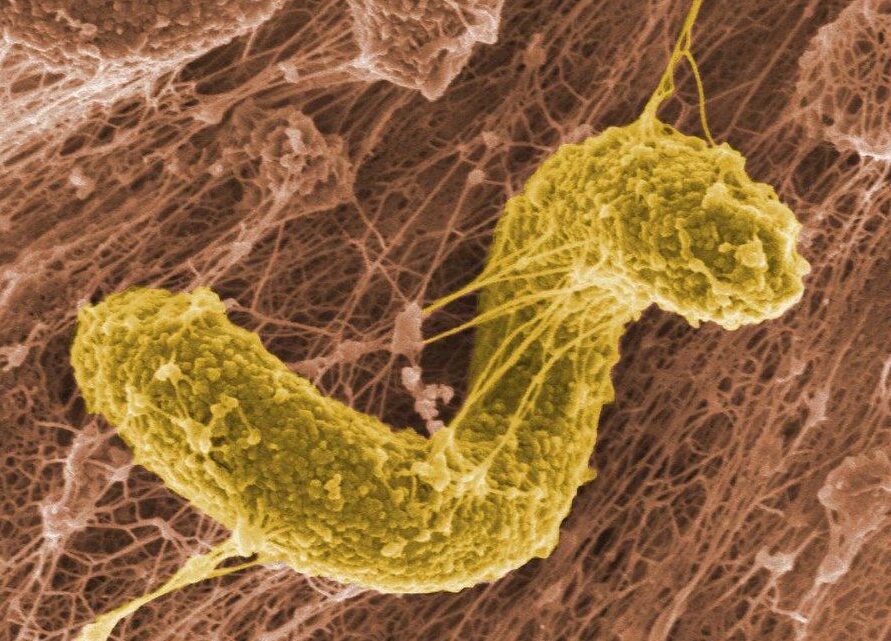Fermentation is a biological process that converts sugars and other carbohydrates into simpler products like acids, gases, or alcohol without the use of oxygen. Fermentation pathway of bacteria refers to the series of chemical steps that bacteria use to break down sugars (like glucose) without using oxygen, in order to produce energy. Many bacteria use fermentation as a way to generate energy, especially in environments where oxygen is limited or absent. There are several different fermentation pathways used by bacteria, each producing different end products. These pathways not only help bacteria survive but are also important in various industries, such as food production, medicine, and environmental management.
Table of Contents
Different Fermentation pathway of bacteria
The different fermentation pathway of bacteria are,
1. Lactic Acid Fermentation
One of the most common types of bacterial fermentation is lactic acid fermentation. In this process, glucose is broken down into lactic acid.
Types of Lactic Acid Fermentation
- Homolactic fermentation: Produces only lactic acid.
- Heterolactic fermentation: Produces lactic acid, ethanol or acetic acid, and carbon dioxide.
Examples of bacteria:
- Lactobacillus
- Streptococcus
- Leuconostoc
Importance of Lactic Acid Fermentation
- Used in the production of yogurt, cheese, and pickles.
- Helps in preserving food by creating an acidic environment that inhibits harmful bacteria.
2. Alcoholic Fermentation
Although mainly associated with yeast, some bacteria can also perform alcoholic fermentation. In this process, glucose is converted into ethanol and carbon dioxide.
Examples of bacteria:

Importance of Alcoholic Fermentation
- Used in the production of alcoholic beverages.
- Also helps in biofuel production (ethanol).
3. Mixed Acid Fermentation
This is a complex fermentation process where bacteria produce a mixture of acids along with gases.
End products of Mixed Acid Fermentation
- Lactic acid
- Acetic acid
- Formic acid
- Succinic acid
- Ethanol
- Carbon dioxide and hydrogen gas
Examples of bacteria:
- Escherichia coli
- Salmonella
Importance of Mixed Acid Fermentation
- Common in enteric (intestinal) bacteria.
- Useful in identifying bacterial species through tests like Methyl Red.
4. Butanediol Fermentation
In this pathway, bacteria produce 2,3-butanediol along with smaller amounts of acids and gases.
Examples of bacteria:
- Enterobacter
- Serratia
- Klebsiella
End products of Butanediol Fermentation
- 2,3-butanediol
- Acetoin (an intermediate)
- Ethanol
- Lactic acid
Importance of Butanediol Fermentation
- Detected by Voges-Proskauer test.
- Helps differentiate bacterial species in labs.
5. Propionic Acid Fermentation
In this type of fermentation, bacteria convert sugars and lactic acid into propionic acid, acetic acid, and carbon dioxide.
Examples of bacteria:
- Propionibacterium
Importance of Propionic Acid Fermentation
- Used in Swiss cheese production (gives it the characteristic holes and flavor).
- Also contributes to body odor by breaking down skin oils.
6. Butyric Acid Fermentation
Here, carbohydrates are broken down into butyric acid, along with gases and sometimes acetone or isopropanol.
Examples of bacteria:
- Clostridium butyricum
- Clostridium acetobutylicum
End products of Butyric Acid Fermentation
- Butyric acid
- Acetic acid
- Carbon dioxide
- Hydrogen
- Sometimes acetone and butanol
Importance of Butyric Acid Fermentation
- Used in industrial solvent production.
- Some species are studied for biofuel research.
7. Acetone-Butanol-Ethanol (ABE) Fermentation
This is a special type of fermentation used by some Clostridium species to produce solvents.
End products of Acetone-Butanol-Ethanol (ABE) Fermentation
- Acetone
- Butanol
- Ethanol
Examples of bacteria:
- Clostridium acetobutylicum
Importance of Acetone-Butanol-Ethanol (ABE) Fermentation
- Historically important during World War I for producing acetone for explosives.
- Being revisited for biofuel and green chemistry.
8. Methanogenesis
While not a fermentation pathway in the strictest sense, it’s a form of anaerobic respiration where certain bacteria (and archaea) produce methane.
Examples of organisms:
- Methanobacterium
- Methanococcus
Substrates used for Methanogenesis
- Carbon dioxide and hydrogen
- Acetate
End product of Methanogenesis
- Methane (CH4)
Importance of Methanogenesis
- Found in wetlands, animal guts, and sewage.
- Plays a role in biogas production.
9. Sulfur Fermentation
In this less common form, sulfur compounds are used as electron acceptors, leading to the formation of hydrogen sulfide (H2S).
Examples of bacteria:

Importance of Sulfur Fermentation
- Found in deep-sea vents and sulfur-rich environments.
- Important in the sulfur cycle.
Summary Table
| Fermentation Type | Main Products | Example Bacteria | Application |
|---|---|---|---|
| Lactic Acid | Lactic acid | Lactobacillus | Yogurt, cheese |
| Alcoholic | Ethanol, CO2 | Zymomonas mobilis | Alcohol, biofuels |
| Mixed Acid | Various acids, gases | E. coli | Diagnostic tests |
| Butanediol | 2,3-Butanediol, acetoin | Enterobacter | Diagnostic tests |
| Propionic Acid | Propionic acid, acetic acid, CO2 | Propionibacterium | Swiss cheese |
| Butyric Acid | Butyric acid, gases | Clostridium butyricum | Biofuel, solvents |
| ABE (Acetone-Butanol) | Acetone, butanol, ethanol | C. acetobutylicum | Solvents, biofuel |
| Methanogenesis | Methane | Methanobacterium | Biogas, carbon cycling |
| Sulfur Fermentation | Hydrogen sulfide (H2S) | Desulfovibrio | Sulfur cycle, environmental impact |
Conclusion
Bacterial fermentation is a diverse and essential biological process. The different fermentation pathway of bacteria not only allow bacteria to survive in a variety of environments but also have important applications in human life. From food and drink production to waste treatment and renewable energy, bacterial fermentation plays a key role. Understanding these pathways also helps scientists in biotechnology and medicine, offering potential solutions to global challenges like energy, health, and sustainability.
Frequently Asked Questions(FAQ)
Do all bacteria ferment lactose ?
No, not all bacteria ferment lactose. Only certain bacteria like E. coli and Klebsiella can ferment lactose because they have the enzyme β-galactosidase, while others like Salmonella and Shigella cannot. This difference is often used in labs to identify and distinguish bacterial species.
What is the role of fermentation in bacteria ?
Fermentation allows bacteria to generate energy (ATP) in the absence of oxygen by breaking down sugars and other organic compounds. It helps them survive in anaerobic (oxygen-free) environments and produces useful end products like acids, gases, or alcohol that can aid in food preservation, defense against other microbes, or industrial applications.
Where do bacteria for fermentation come from ?
Bacteria for fermentation come from places like soil, water, plants, and animal guts. In food and industry, special bacteria called starter cultures are added to control the process. Sometimes, in wild fermentation, natural bacteria on the food itself do the job. These bacteria work without oxygen and help turn sugars into things like acids, gases, or alcohol.
Related Articles




